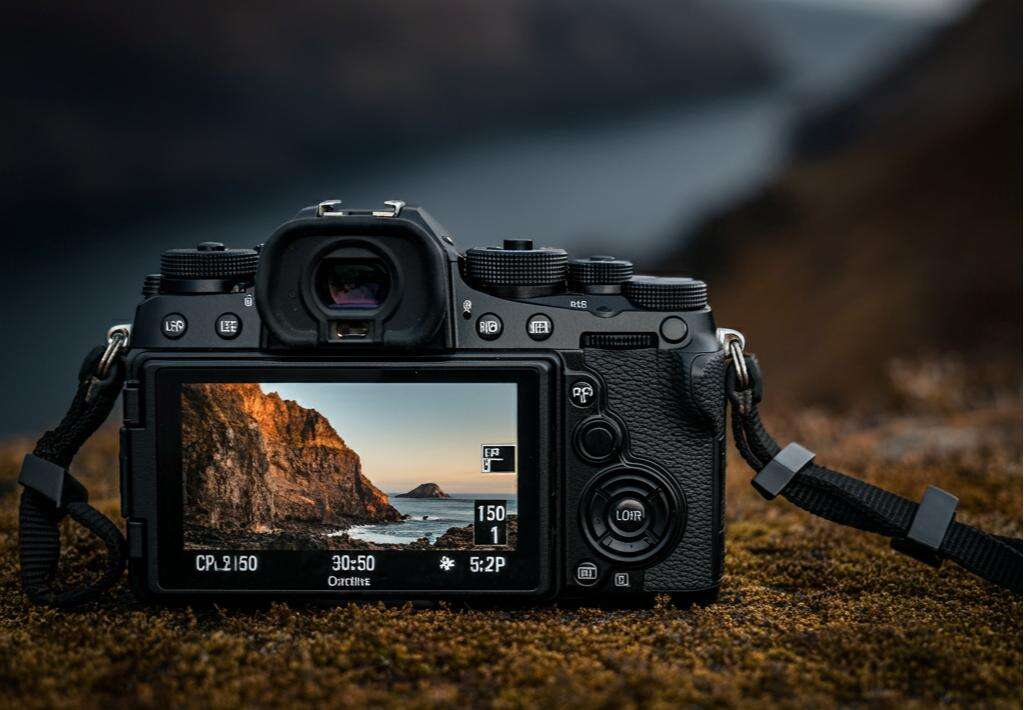Monochrome vs. Color Camera Modules: Why Monochrome Camera Modules are Better in Embedded Vision?
One of the important criteria we use when choosing an embedded vision camera is the chroma type. There are two common types of chroma cameras: black and white cameras and color cameras. We commonly use color cameras to record colorful images in our daily life. However, this does not necessarily mean that color cameras are superior to black and white cameras.
Monochrome cameras specialize in capturing grayscale images, while color cameras capture full-color images. For individual embedded vision applications, black and white monochrome cameras are a more practical and effective solution as they are able to capture more detailed images in low light environments. Let's take a closer look at color and monochrome cameras to see the differences and why it's better to use monochrome cameras than color cameras for embedded vision.
What is a color camera module? How does it work?
A color camera module is a camera that captures and generates a full-color image. It uses pixel points on the sensor to capture light of a specific wavelength and converts the light information into color information using a color filter array (CFA). Color cameras shoot faster than monochrome cameras. In low-light conditions, color camera modules may have problems such as lack of clarity and detail. This is because the color filter array reduces the amount of light reaching the sensor.

Color camera modules typically use a CFA with alternating red, green, and blue filters in a Bayer mode.The Bayer mode captures only 1/3 of the incident light per pixel, and the rest of the colors that do not match the mode are automatically filtered. Also, this mode requires the reconstruction of a complete panchromatic image by means of a de-mosaicing algorithm that combines the points of sensitivity to produce a panchromatic pixel, i.e., only one color is measured at any point of sensitivity, and the rest are derived by inference.
Color cameras are typically cheaper than monochrome cameras and are more commonly used in photography, smartphones and applications requiring color recognition and color information for the mass consumer market.
What is a monochrome camera module?
Earlier we had some information about black and white cameras.Unlike color cameras, which specialize in capturing grayscale images, monochrome cameras can capture all incident light since CFA is not used. Both red, green and blue are absorbed. Therefore the amount of light is three times that of a color camera, while no de-mosaicing algorithms are needed to refine the image. Therefore monochrome cameras have better performance than color cameras in low light conditions.
Differences between color and monochrome cameras
Color cameras and monochrome cameras are two different ways of capturing images. Below we compare the differences between the two in terms of image quality, light sensitivity and resolution:
Image Quality: Due to the absence of color filter arrays, monochrome cameras are able to capture sharper, more detailed images than color cameras, especially in low-light conditions. Conversely, color cameras are able to capture full color images, which is important for applications requiring color information.
Light Sensitivity: Because there is no color filter array, monochrome cameras are more sensitive to light and receive more light than color cameras. As a result, the best monochrome camera modules have better low-light performance than color cameras.
Resolution: Monochrome cameras have a higher resolution than color cameras. This is due to the fact that each pixel of a monochrome camera captures all the light that arrives.
Why are monochrome cameras better than color cameras in embedded vision?
Embedded vision applications require more accurate image details and faster processing speeds. So why are monochrome cameras better in embedded vision? We can summarize the following advantages:
- Monochrome cameras perform better in low-light conditions
- Monochrome camera algorithms are carefully optimized
- Monochrome sensors inherently have higher frame rates
Let's expand on this below.

Better low-light performance
The main difference between color and monochrome cameras is that monochrome cameras do not have a color filter array (CFA). By removing the color filters you make a monochrome camera more sensitive to light and receive more light.
In addition, color cameras are usually equipped with infrared cut-off filters to prevent a variety of chromatic aberration problems caused by the reaction of the three primary colors with near-infrared wavelengths of light.
Since monochrome cameras do not have both CFA and IR cutoff filters, the sensor can detect a wider spectral range and accept more light. This means that monochrome cameras are able to perform extremely well in low-light conditions.
Faster algorithms
Color cameras are not suitable for embedded vision applications based on edge Ai due to their complex image building algorithms.
On the contrary, many of the algorithms of monochrome cameras can be used to detect objects, predict objects and other applications using vision models.
Higher frame rate
Monochrome camera sensor pixels are smaller than color cameras. In color cameras, the amount of data to process the same image is higher and the processing time is longer than in monochrome digital cameras, resulting in slower frame rates. On the contrary, monochrome cameras have faster processing and higher frame rate.
Here we can conclude that when processing the same image data in individual embedded vision applications, the processing speed, low-light performance, and frame rate of monochrome cameras are higher and better than color cameras, and therefore, it is better to use monochrome cameras than color cameras in individual embedded vision applications.
Applications for Monochrome Camera Modules
Let's explore some embedded vision applications that don't specifically require color information and see how a monochrome camera can make a difference.
Automatic Number Plate Recognition (ANPR)
In intelligent transportation systems, we often need to identify violations by capturing license plates. The first thing we can make clear is that we don't need color information, we just need to quickly capture the image and then analyze it to read the vehicle information through OCR (Optical Character Recognition). Whether it is day or night. Therefore, monochrome digital cameras with high sensitivity and strong low-light performance are able to complete this application well. However, individual areas where color plate recognition is required still need to use color cameras.
Quality Inspection
In industrial automation applications where cameras are used to detect whether an object is damaged or not, monochrome cameras can be used. This is widely used in factories to ensure that the quality of the product is satisfactory.
Conclusion
In conclusion, both monochrome and color cameras have their own advantages and limitations. More applications and our needs are different, I need to combine the actual situation to make a choice. Monochrome camera low light performance is strong, able to capture clear, detailed images in low-light environments, but the cost is higher, unable to capture color images. Color cameras are capable of capturing full-color images, but have low light sensitivity and may produce unclear, undetailed images in low-light conditions.
We hope that this article has given you an initial understanding of the differences between monochrome and color cameras, and an idea of the kinds of applications in which monochrome cameras are appropriate. For example, in applications where color output is not a concern, but rather sensitivity and low-light performance, a monochrome camera should be used.
Of course, Sinoseen is always available to assist you if you need help, and with more than 15 years of experience as a supplier of OEM camera solutions, Sinoseen has a wide range of monochrome cameras with different configurations and parameters for every application. Please feel free to contact us if you need any assistance.

 EN
EN
 AR
AR
 DA
DA
 NL
NL
 FI
FI
 FR
FR
 DE
DE
 EL
EL
 HI
HI
 IT
IT
 JA
JA
 KO
KO
 NO
NO
 PL
PL
 PT
PT
 RO
RO
 RU
RU
 ES
ES
 SV
SV
 TL
TL
 IW
IW
 ID
ID
 SR
SR
 VI
VI
 HU
HU
 TH
TH
 TR
TR
 FA
FA
 MS
MS
 IS
IS
 AZ
AZ
 UR
UR
 BN
BN
 HA
HA
 LO
LO
 MR
MR
 MN
MN
 PA
PA
 MY
MY
 SD
SD














